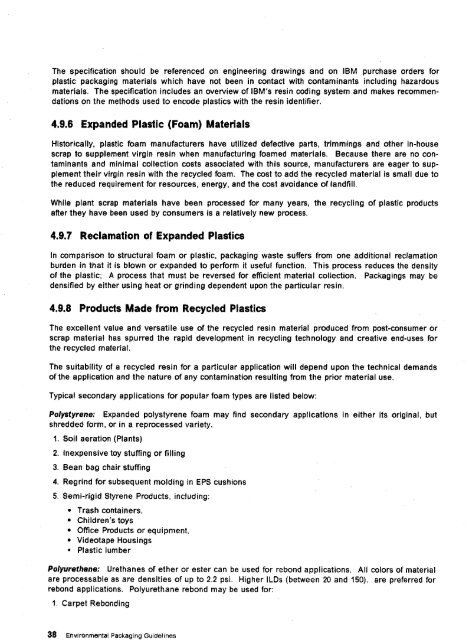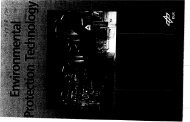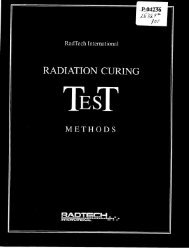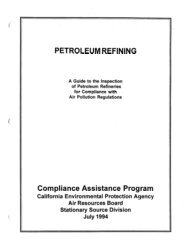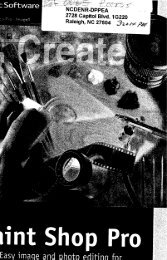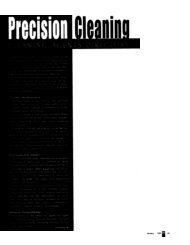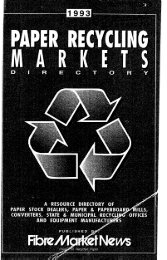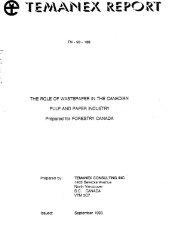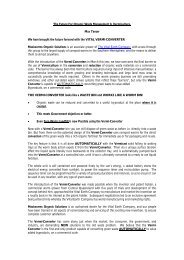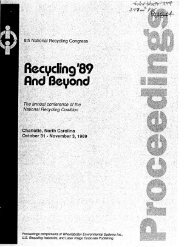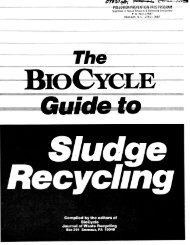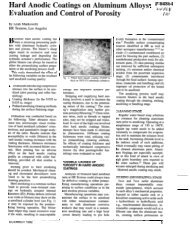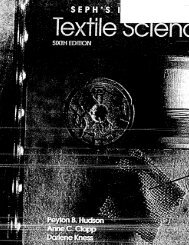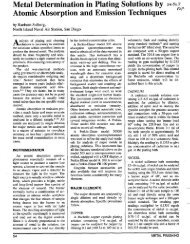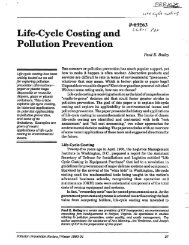Electronic Parts/Guidelines - infoHouse
Electronic Parts/Guidelines - infoHouse
Electronic Parts/Guidelines - infoHouse
Create successful ePaper yourself
Turn your PDF publications into a flip-book with our unique Google optimized e-Paper software.
The specification should be referenced on engineering drawings and on IBM purchase orders for<br />
plastic packaging materials which have not been in contact with contaminants including hazardous<br />
materials. The specification includes an overview of IBM's resin coding system and makes recommen-<br />
dations on the methods used to encode plastics with the resin identifier.<br />
4.9.6 Expanded Plastic (Foam) Materials<br />
Historically, plastic foam manufacturers have utilized defective parts, trimmings and other in-house<br />
scrap to supplement virgin resin when manufacturing foamed materials. Because there are no con-<br />
taminants and minimal collection costs associated with this source, manufacturers are eager to sup-<br />
plement their virgin resin with the recycled foam. The cost to add the recycled material is small due to<br />
the reduced requirement for resources, energy, and the cost avoidance of landfill.<br />
While plant scrap materials have been processed for many years, the recycling of plastic products<br />
afler they have been used by consumers is a relatively new process.<br />
4.9.7 Reclamation of Expanded Plastics<br />
In comparison to structural foam or plastic, packaging waste suffers from one additional reclamation<br />
burden in that it is blown or expanded to perform it useful function. This process reduces the density<br />
of the plastic; A process that must be reversed for efficient material collection. Packagings may be<br />
densified by either using heat or grinding dependent upon the particular resin.<br />
4.9.8 Products Made from Recycled Plastics<br />
The excellent value and versatile use of the recycled resin material produced from post-consumer or<br />
scrap material has sp.urred the rapid development in recycling technology and creative end-uses for<br />
the recycled material.<br />
The suitability of a recycled resin for a particular application will depend upon the technical demands<br />
of the application and the nature of any contamination resulting from the prior material use.<br />
Typical secondary applications for popular foam types are listed below:<br />
Polystyrene: Expanded polystyrene foam may find secondary applications in either its original, but<br />
shredded form, or in a reprocessed variety.<br />
1. Soil aeration (Plants)<br />
2. Inexpensive toy stuffing or filling<br />
3. Bean bag chair stuffing<br />
4. Regrind for subsequent molding in EPS cushions<br />
5. Semi-rigid Styrene Products, including:<br />
Trash containers,<br />
Children's toys<br />
Office Products or equipment,<br />
Videotape Housings<br />
- Plastic lumber<br />
Polyurethane: Urethanes of ether or ester can be used for rebond applications. All colors of material<br />
are processable as are densities of up to 2.2 psi. Higher ILDs (between 20 and 150). are preferred for<br />
rebond applications. Polyurethane rebond may be used for:<br />
I. Carpet Rebonding<br />
38 Environmental Packaging <strong>Guidelines</strong>


